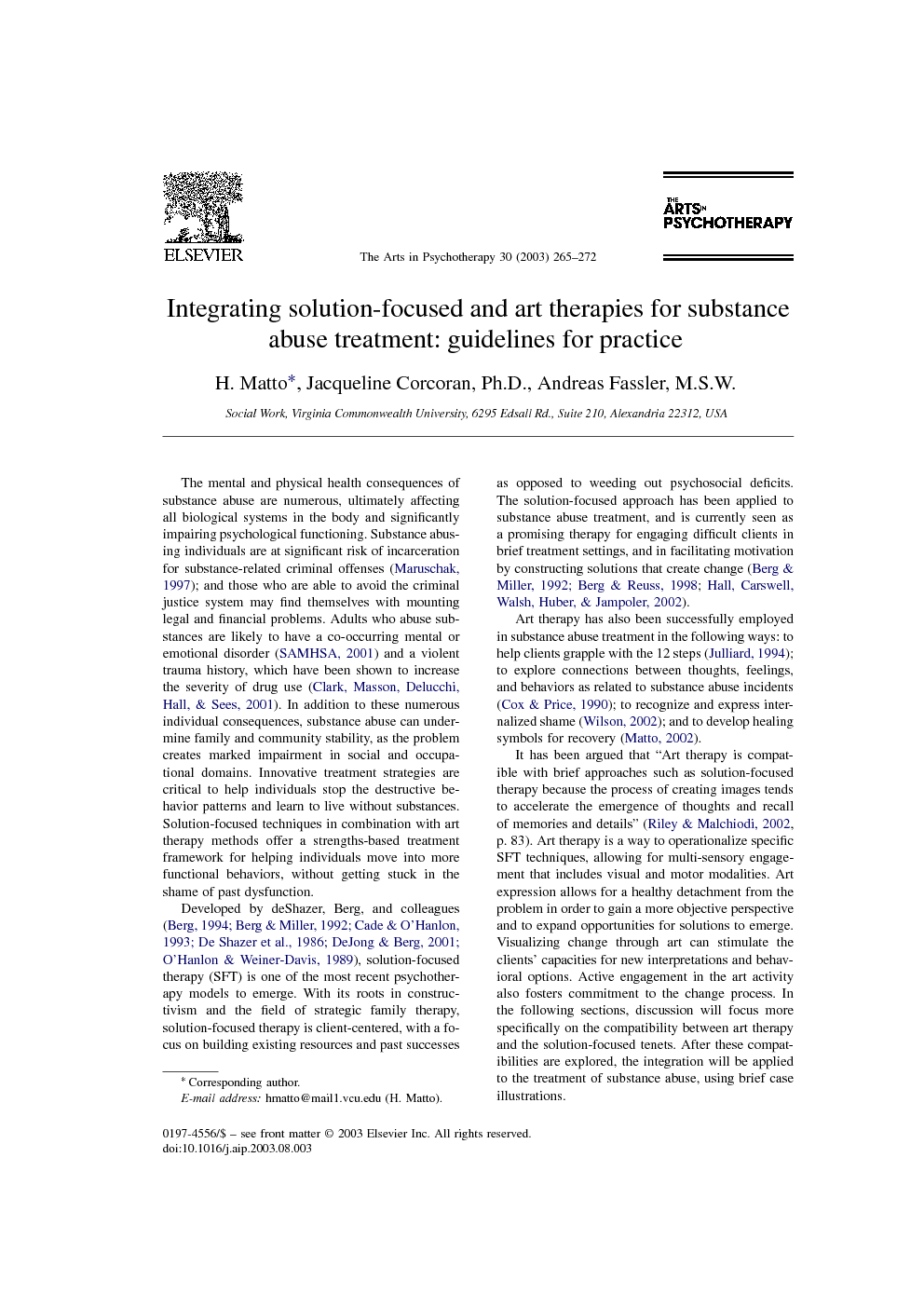The mental and physical health consequences of substance abuse are numerous, ultimately affecting all biological systems in the body and significantly impairing psychological functioning. Substance abusing individuals are at significant risk of incarceration for substance-related criminal offenses (Maruschak, 1997); and those who are able to avoid the criminal justice system may find themselves with mounting legal and financial problems. Adults who abuse substances are likely to have a co-occurring mental or emotional disorder (SAMHSA, 2001) and a violent trauma history, which have been shown to increase the severity of drug use (Clark, Masson, Delucchi, Hall, & Sees, 2001). In addition to these numerous individual consequences, substance abuse can undermine family and community stability, as the problem creates marked impairment in social and occupational domains. Innovative treatment strategies are critical to help individuals stop the destructive behavior patterns and learn to live without substances. Solution-focused techniques in combination with art therapy methods offer a strengths-based treatment framework for helping individuals move into more functional behaviors, without getting stuck in the shame of past dysfunction.
Developed by deShazer, Berg, and colleagues (Berg, 1994, Berg & Miller, 1992, Cade & O’Hanlon, 1993, De Shazer et al., 1986, DeJong & Berg, 2001 and O’Hanlon & Weiner-Davis, 1989), solution-focused therapy (SFT) is one of the most recent psychotherapy models to emerge. With its roots in constructivism and the field of strategic family therapy, solution-focused therapy is client-centered, with a focus on building existing resources and past successes as opposed to weeding out psychosocial deficits. The solution-focused approach has been applied to substance abuse treatment, and is currently seen as a promising therapy for engaging difficult clients in brief treatment settings, and in facilitating motivation by constructing solutions that create change (Berg & Miller, 1992 and Berg & Reuss, 1998; Hall, Carswell, Walsh, Huber, & Jampoler, 2002).
Art therapy has also been successfully employed in substance abuse treatment in the following ways: to help clients grapple with the 12 steps (Julliard, 1994); to explore connections between thoughts, feelings, and behaviors as related to substance abuse incidents (Cox & Price, 1990); to recognize and express internalized shame (Wilson, 2002); and to develop healing symbols for recovery (Matto, 2002).
It has been argued that “Art therapy is compatible with brief approaches such as solution-focused therapy because the process of creating images tends to accelerate the emergence of thoughts and recall of memories and details” (Riley & Malchiodi, 2002, p. 83). Art therapy is a way to operationalize specific SFT techniques, allowing for multi-sensory engagement that includes visual and motor modalities. Art expression allows for a healthy detachment from the problem in order to gain a more objective perspective and to expand opportunities for solutions to emerge. Visualizing change through art can stimulate the clients’ capacities for new interpretations and behavioral options. Active engagement in the art activity also fosters commitment to the change process. In the following sections, discussion will focus more specifically on the compatibility between art therapy and the solution-focused tenets. After these compatibilities are explored, the integration will be applied to the treatment of substance abuse, using brief case illustrations.
This article has explored the compatibility of art therapy and solution-focused treatment and how these two methods can be integrated for the treatment of substance abuse. Ideas for solution-focused art therapy directives have been provided, as has a verbal processing protocol. This protocol identifies the critical areas to explore in relation to the client’s art work.
In summary, art making offers opportunities for a more focused practitioner–client relationship, developed around the client’s artwork. In addition, the artwork itself can become a tangible documentation of change. Multiple drawings created over a period of time can be a way to track client change. At critical incidents (e.g., time of loss or transition), and particularly during the termination phase, a review of progress can be made, viewing clients’ changes in their artwork.


